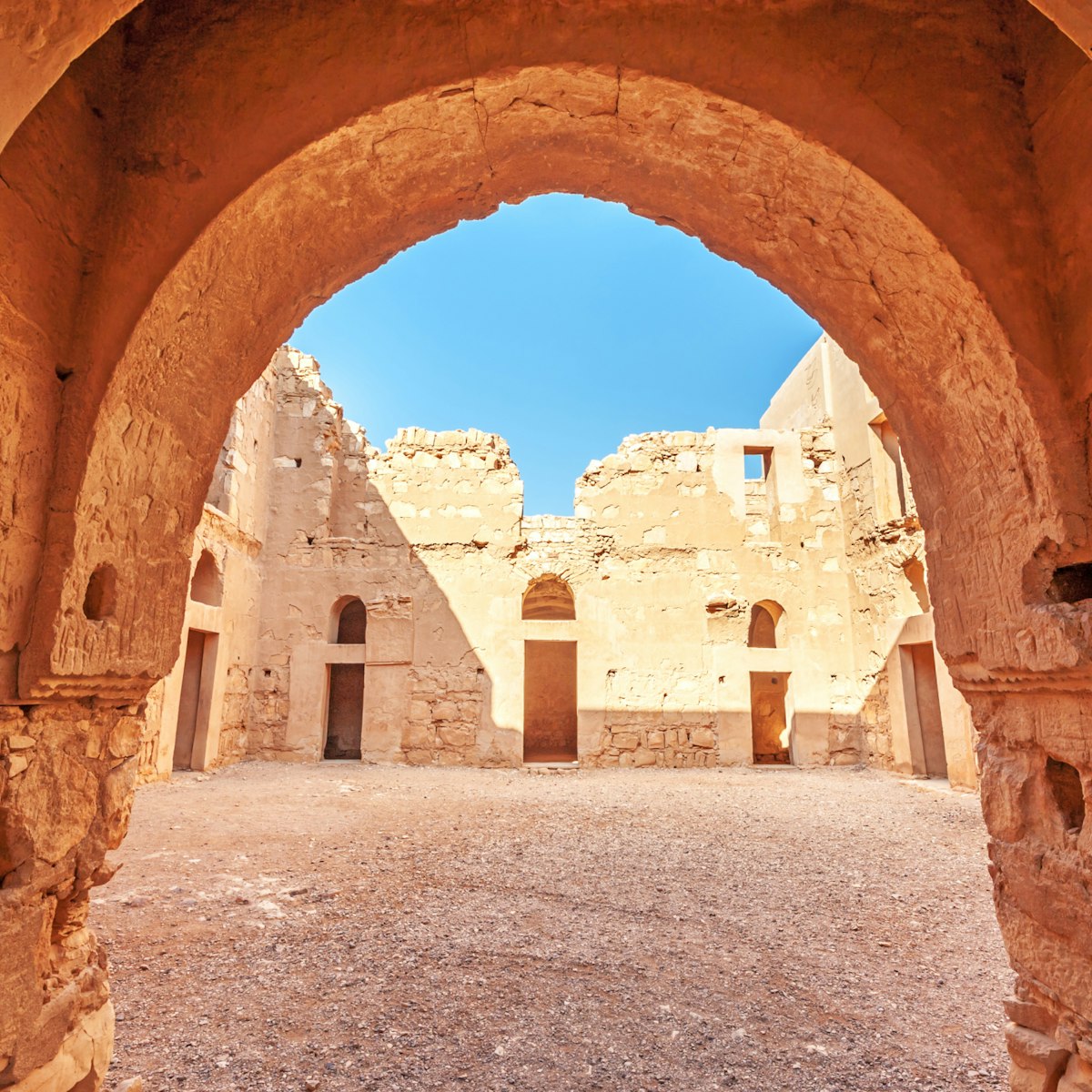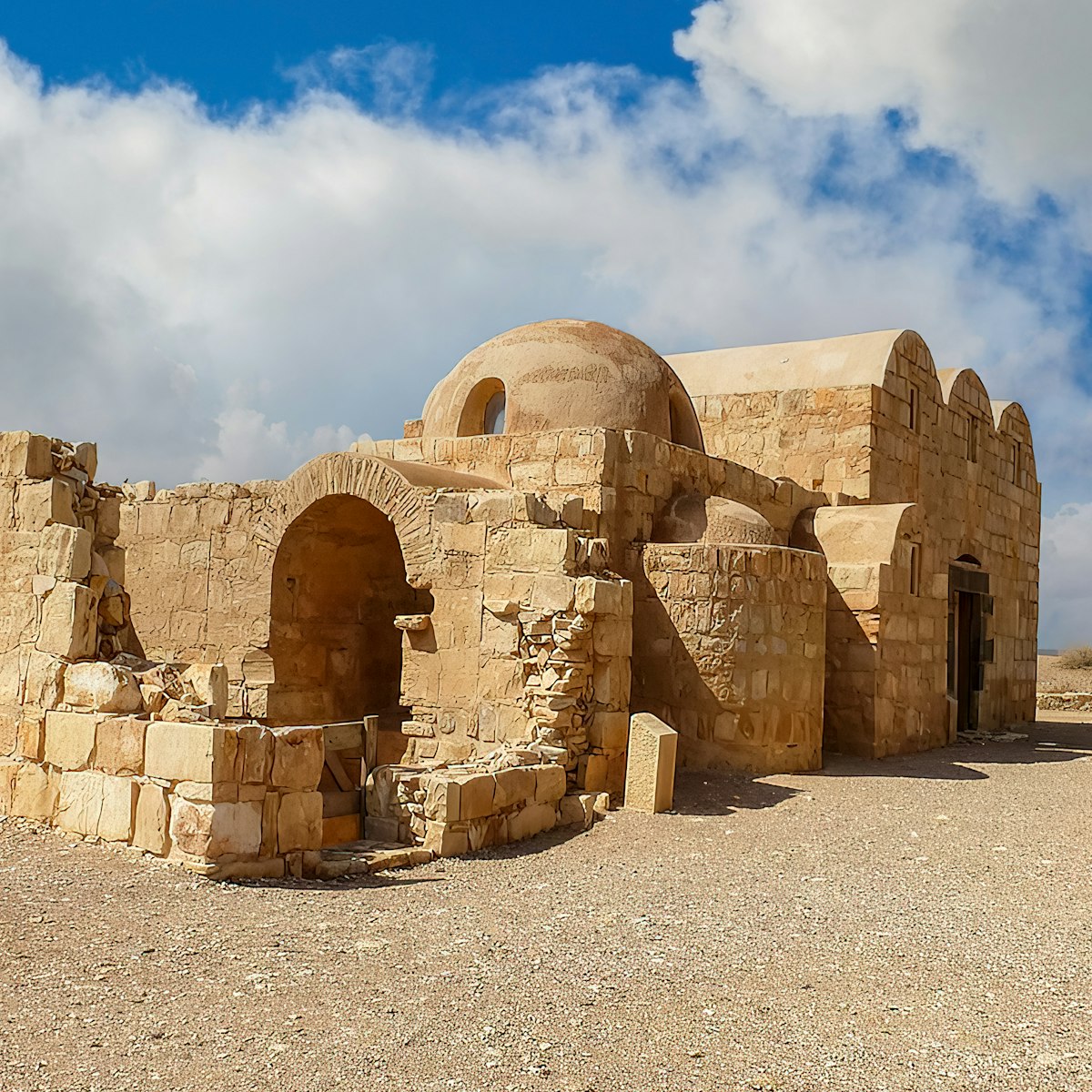If you can find this little scrap of history near the Shaumari Wildlife Reserve, you deserve a medal! Once a robust and practical structure, built by the Romans in the 3rd century AD to protect the source of Wadi As Sirhan (now in Saudi Arabia), this fort was abandoned less than 100 years later. All that remains now are the outline of the fort in broken walls and a couple of ruined wells and cisterns.
You don’t come to a fort like this to look at the pile of old stones, strewn across the wadi bottom – even though some of those stones have evocative inscriptions and even though you may well be one of only a handful of people to have stepped over the threshold in centuries. No, you come to a castle like this to enjoy the excuse it provides to encounter the desert.
A shallow wadi runs alongside the fort, home to stunted tamarisk trees and shrubs of stick-tight (a type of herb). From the top of the ruins, a vast sky opens up across the almost entirely flat horizon. The silence is almost audible as the nothingness pulses in your ears. This is why you attempt a visit to a castle like Qasr ‘Uweinid, to experience the absence of all the usual clutter and noise. If you don’t find it, it doesn’t matter, but you will have gained a greater understanding of why for centuries visitors have been beguiled by the desert, sand or no sand!
Qasr 'Uweinid is a pile of greyish ruins on a small tell (ancient mound) about 8km southwest of Azraq, though it’s probably fair to say that you’ll never find it without asking locally for directions. Be aware of driving off-road too close to the military airbase. A 4WD isn’t strictly necessary as the gravel plain is firm, and when it stops being firm, you can get out and walk the last 500m.





